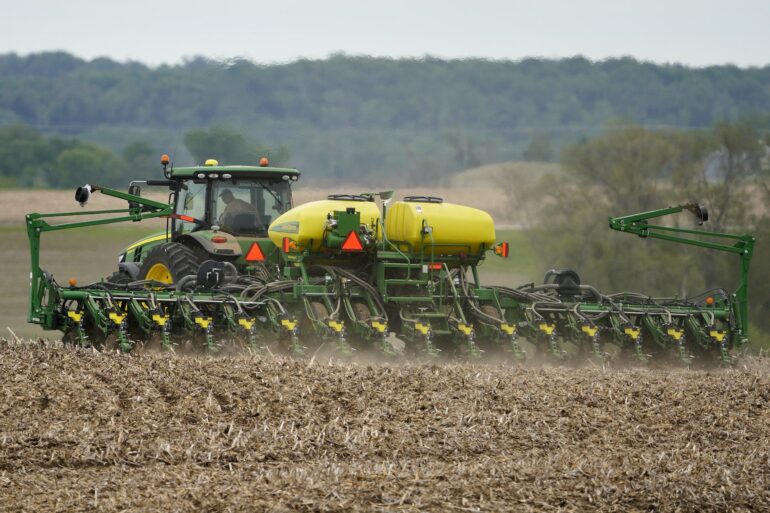For all the attention on flashy new artificial intelligence tools like ChatGPT, the challenges of regulating AI, and doomsday scenarios of superintelligent machines, AI is a useful tool in many fields. In fact, it has enormous potential to benefit humanity.
In agriculture, farmers are increasingly using AI-powered tools to tackle challenges that threaten human health, the environment and food security. Researchers forecast the market for these tools to reach US$12 billion by 2032.
As a researcher studying agricultural and rural policy, I see three promising developments in agricultural AI: federated learning, pest and disease detection and forecasting prices.
Pooling data without sharing it
Robotics, sensors and information technology are increasingly used in agriculture. These tools aim to help farmers improve efficiency and reduce chemical use. In addition, data collected by these tools can be used in software that uses machine learning to improve management systems and decision-making. However, these applications typically require data sharing among stakeholders.
A survey of U.S. farmers found that more than half of respondents said they do not trust federal agencies or private companies with their data. This lack of trust is linked to concerns about sensitive information becoming compromised or being used to manipulate markets and regulations. Machine learning could reduce these concerns.
Federated learning is a technique that trains a machine learning algorithm on data from multiple parties without the parties having to reveal their data to each other. With federated learning, a farmer puts data on a local computer that the algorithm can access rather than sharing the data on a central server. This method increases privacy and reduces the risk of compromise.
If farmers can be persuaded to share their data this way, they can contribute to a collaborative system that helps them make better decisions and meet their sustainability goals. For example, farmers could pool data about conditions for their chickpea crops, and a model trained on all of their data could give each of them better forecasts for their chickpea yields than models trained only on their own data.
An AI-driven giant robot armed with lasers is a major threat – to weeds.
Detecting pests and disease
Farmer livelihoods and global food security are increasingly at risk from plant disease and pests. The Food and Agriculture Organization estimates that worldwide annual losses from disease and pests total $290 billion, with 40% of global crop production affected.
Farmers typically spray crops with chemicals to preempt outbreaks. However, the overuse of these chemicals is linked to harmful effects on human health, soil and water quality and biodiversity. Worryingly, many pathogens are becoming resistant to existing treatments, and developing new ones is proving to be difficult.
Reducing the…



